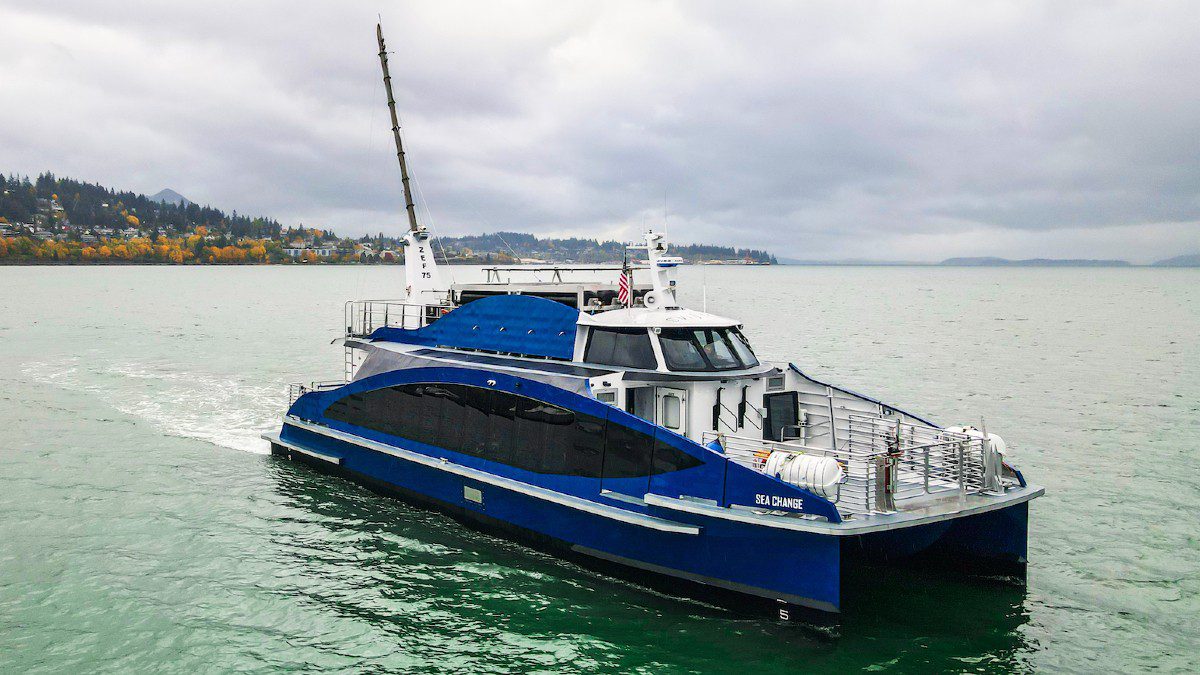Green hydrogen produced by a first-of-a-kind floating fuelling station will become available in San Francisco Bay starting in 2024, with project completion targeted for 2025
A subsidiary of San Francisco-based Hornblower Group has received an US$8M grant from the US Department of Energy (DoE) to design, construct and operate the facility, which will produce green hydrogen through the use of hydroelectric power. Total project cost is estimated at US$16M.
Hornblower Energy began the three-year project officially in 2021. This project will demonstrate the use of zero-carbon hydroelectric energy in the electrolysis of water, producing green hydrogen for marine use, as well as hydrogen fuel cell vehicles. Furthermore, the fuelling facility will provide vital experience for handling, storing, and producing green hydrogen, and barge-to-ship and barge-to-truck transfer, as well as recharging hybrid-electric vessels via hydrogen fuel cells.
Compatible with other renewable energy sources such as offshore wind, the barge-based system will produce 530 kg per day of green hydrogen and have onboard storage of about 500 kg at 500 bar, according to a presentation before the California Hydrogen Council last year. Additionally, design plans call for a hydrogen fuel cell located on board the barge to provide power for battery charging.
Among Hornblower’s partners are gas technology company Air Liquide, small-scale hydrogen technology firm BayoTech, renewable hydrogen and electrolyser technology provider Nel Hydrogen, US federally funded Sandia National Labs, the Port of San Francisco and naval architectural and marine engineering firm Glosten.
The contract was awarded by the DoE’sOffice of Energy Efficiency & Renewable Energy (EERE),Hydrogen and Fuel Cell Technologies Office in support of its H2@Scale initiative for affordable hydrogen production, storage, distribution and utilisation. Hornblower’s floating bunker station will support the EERE’s multi-year initiative to fully realise hydrogen’s benefits across the economy.
Over the last 15 years, Hornblower has implemented emissions-reducing solutions across a wide range of propulsion systems and energy inputs, including hybrid, hybrid-electric, all-electric, efficient engine, biofuels, and hydrogen.
“Hydrogen technology will very likely play an important role in zero-emission energy efforts for years to come, and while this new project is uncharted territory for the entire industry, Hornblower is dedicated to sustainable practices both on land and on the water,” said Hornblower chief strategy and business development officer Cameron Clark. “With a global fleet of more than 200 vessels with additional vehicle and bus operations, this new undertakingbuilds upon our broad category of results-oriented consultation and operational servicesand environmental engagement.”
Port of San Francisco executive director Elaine Forbes said, “Promoting the use of hydrogen fuel to power the movement of people and goods across our beloved Bay and waters far from our shores, will reduce our dependence on fossil fuels and be a key tool in helping to fight climate change.”
Hydrogen-fuelled vessels
The uptake of zero-carbon fuels in shipping is not possible without reliable and available supply and bunkering infrastructure. Hydrogen vessels currently under development and expected to be operating in San Francisco Bay — such as SWITCH Maritime’sSea Change and Hornblower’s Discover Zero — will be able to use the facility to refuel with green hydrogen. Sea Change is a 23-m, 75-passenger aluminium-hulled catamaran that is fitted with a hydrogen fuel cell and battery. Discover Zero will have four 30-kW fuel cell modules, onboard hydrogen storage of 170 kg at 250 bar and battery storage of 1.6 MWh.
Hornblower environmental pioneer
With a global footprint that extends beyond the US to Canada, the UK, Japan and Australia, Hornblower is forward-leaning vessel owner and manager, with a number of environmental and technology accomplishments to its credit. These cover using selective catalytic reduction system to reduce NOx emissions in a passenger vessel application in 2007, incorporating multiple sources of renewable electric power including solar and wind in hybrid-powered passenger vessels in 2008, developing the first all-electric car ferry in partnership with the Alabama Department of Transportation, the first all-electric passenger ferry system in the US, and the design and delivery of newly constructed 350-passenger ferries for the NYC Ferry system with Tier 4 engines in April 2020.





